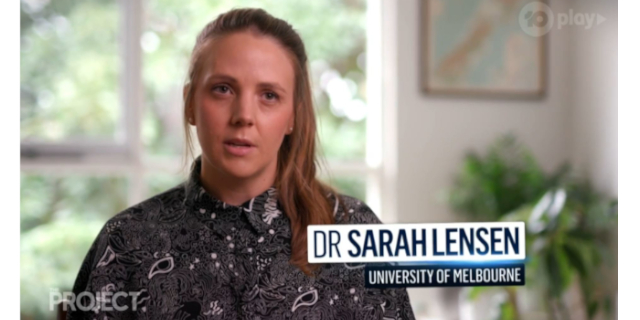IVF add-ons research in the news

Dr Sarah Lensen's IVF add-ons research was front page news in the print version of The Age and Herald Sun newspapers on 4 May 2021. It also ran in several online news sites and Dr Lensen was a guest on Chanel 10’s The Project.
Dr Sarah Lensen, NHMRC Research Fellow from the Department of Obstetrics and Gynaecology is the lead researcher in the IVF add-ons study conducted at Royal Women’s Hospital which found that many Australian women are opting to purchase IVF treatment add-ons, such as acupuncture and herbal medicine, in an effort to improve their chances of having a baby.
The study, ‘How common is add-on use and how do patients decide whether to use them? A national survey of IVF patients’ published in the journal Human Reproduction, was conducted by researchers from the Women’s the University of Melbourne, Queensland University of Technology, the University of Manchester, Monash University, and the Victorian Assisted Reproductive Treatment Authority.
It included 1,590 Australian women and found 82 per cent had used one or more add-ons when going through IVF in the past four years. Most of these optional extras (72 per cent) came with an additional cost.
Add-ons are defined as procedures, techniques or medicines that are used in addition to standard IVF protocols. They include additional medications; complementary and alternative medicines such as acupuncture; technology such as time lapse imaging of embryos; and procedures including ‘endometrial scratching’.
Many of these add-ons lack evidence to show they are safe and effective.
With 75,000 IVF cycles completed every year in Australia, and with more affordable IVF services available in Victoria, the lead researcher Dr Sarah Lensen says there is a strong need to better understand the whole IVF experience in Australia, as well as the treatment options people choose and why.
“Assisted reproductive technology really has come so far. But, as researchers, we still have fundamental questions about the experience of people going through IVF,” says Dr Lensen.
“When people face fertility challenges, they are often in the vulnerable position of not having a full understanding of what treatments are available to them, what they involve and what the chances of the treatments resulting in a baby for them really are. It is complex, and it’s often a steep learning curve.
“It’s important that we build up a solid evidence base so we can help inform those providing IVF and those going through it themselves with key information. We know the IVF journey isn’t always easy, so we hope this information will improve the experience.”
“The Women’s is one of the few places that has low-cost IVF available to patients, but at many private clinics the cost of fertility treatments can be very high – especially when extra medications, and additional testing is involved,” says Dr Lensen.
“There often isn’t high-quality evidence to support these add-ons in routine practice. Hopefully, this will improve our understanding and inform decision-making in the future.”
Text taken from The Royal Women’s Hospital website.
Links
S Lensen, K Hammarberg, A Polyakov, J Wilkinson, S Whyte, M Peate, M Hickey, How common is add-on use and how do patients decide whether to use them? A national survey of IVF patients, Human Reproduction, 2021;, deab098, https://doi.org/10.1093/humrep/deab098
The Project – link only available till August 2021